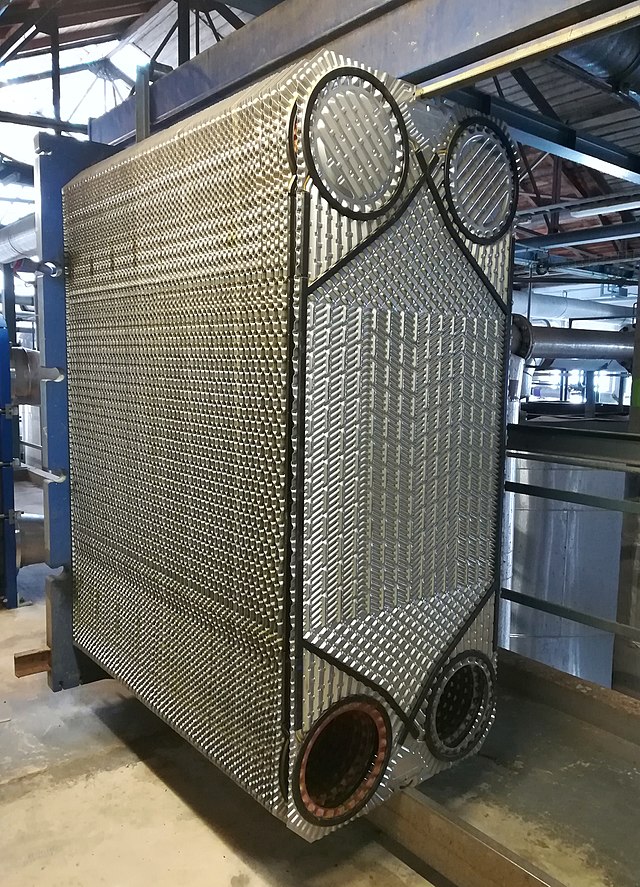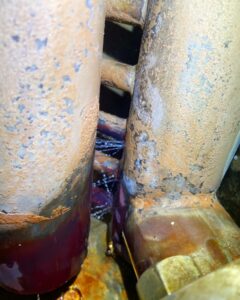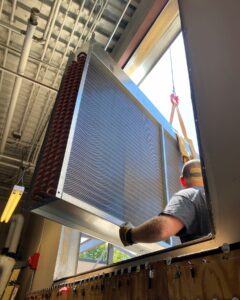Heat exchangers play a crucial role in the transfer of heat between different fluids or gases. In this article, we will explore the different types of heat exchangers in HVAC systems, their applications, benefits and issues.
Common Heat Exchangers in HVAC Systems


Plate And Frame Heat Exchanger
There are several types of heat exchangers used in HVAC systems, including plate and frame, shell and tube, and spiral heat exchangers.
Plate and frame heat exchangers consist of a series of thin metal plates that are clamped together. This forms a series of channels for the fluid to flow through. These heat exchangers are typically used in small-scale applications and are known for their high efficiency and compact size.
Shell and tube heat exchangers are one of the most common types of heat exchangers used in HVAC systems. They consist of a series of tubes that are surrounded by a larger outer shell. The fluid to be cooled, or heated, flows through the tubes. At the same time the other fluid flows around the outside of the tubes, allowing for efficient heat transfer. These heat exchangers are typically used in larger-scale applications and are known for their durability and reliability.
Spiral heat exchangers are a relatively new type of heat exchanger that are becoming increasingly popular in HVAC systems. They consist of a series of spiral-shaped plates that are stacked together to form a series of channels for the fluid to flow through. These heat exchangers are known for their high efficiency and compact size, making them a great choice for space-constrained applications.
Benefits Of Heat Exchangers
There are many benefits to using heat exchangers in HVAC systems. One of the main benefits is energy efficiency. By transferring heat between fluids or gases, heat exchangers reduce the amount of energy needed to cool or heat the building. Additionally, heat exchangers are known for their durability and reliability, making them a great choice for long-term use in HVAC systems.
Common Heat Exchanger Issues
There are several common issues that can occur with heat exchangers in HVAC systems, including:

- Fouling: Fouling occurs when dirt, dust, or other debris accumulates on the surfaces of the heat exchanger. This reduces its efficiency and makes it more difficult for heat to be transferred.
- Corrosion: Corrosion can occur due to the exposure of the heat exchanger to harsh chemicals or corrosive gases, leading to damage and reduced efficiency.
- Leakage: Leakage can occur due to a variety of factors, including corrosion or damage to the heat exchanger. Leakage can lead to reduced efficiency and increased energy costs.
- Blockages: Blockages can occur due to the buildup of debris or other materials in the heat exchanger. This makes it difficult for the fluid to flow through and reducing its efficiency.
- Incorrect sizing: Using a heat exchanger that is too small or too large for the application can lead to reduced efficiency.
- Inadequate maintenance: Neglecting regular maintenance and cleaning of the heat exchanger can lead to fouling, corrosion, and other issues that can reduce its efficiency.
A Real World Example

A gas furnace uses a heat exchanger to transfer heat from the combustion of natural gas, to the air that is circulated. A heat exchanger is a metal chamber located within the furnace, where the combustion process takes place.
The process begins when the thermostat sends a signal to the furnace to start heating. The furnace’s control system opens a valve to allow natural gas to flow into the combustion chamber. This gas is then ignited by a spark or pilot light. The heat generated by the combustion process is transferred to the heat exchanger.
Heat exchangers in furnaces are designed with a series of metal fins. These fins help to increase the surface area, allowing for more efficient heat transfer. As the air from the building is circulated through the furnace, it passes over the heat exchanger. The air then absorbs the heat generated by the combustion process. This warmed air is then distributed throughout the building through the ducts.
The heat exchanger also serves as a safety feature. It is designed to prevent the combustion gases produced by the furnace from entering the living space. The heat exchanger is made of metal and has a high thermal conductivity. This allows it to transfer heat effectively while also preventing the combustion gases from leaking into the living space.
In Conclusion
Heat exchangers are an essential component of HVAC systems, and play a crucial role in the transfer of heat between different fluids or gases. With a variety of types and applications, heat exchangers offer a range of benefits, including energy efficiency, durability, and reliability. Heat exchangers are a great choice if you are looking to upgrade your HVAC system or in the process of buying a new system.


